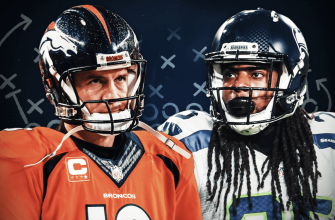A long snapper is one of the most specialized positions in football. They are responsible for snapping the ball directly to the holder on field goals and extra point attempts. Long snappers also snap the ball on punts and punt fakes. This is a very specialized skill that requires years of practice to perfect.
While not a glamorous position, the long snapper plays an absolutely vital role in football. A clean, accurate snap is crucial on kicks, punts and punt fakes. A bad snap can lead to a blocked kick or extra point attempt, resulting in a momentum swing for the opposing team. Having a reliable long snapper provides stability for a team’s kicking game. Their anonymity and lack of time in the spotlight is a testament to their consistency.
Long snappers need to have pinpoint accuracy and elite timing to properly execute their snaps. They usually have the added responsibility of being the first players down the field in punt coverage. Long snappers tend to stay with teams for many years because it’s rare to find players capable of perfecting the intricacies of long snapping. Their specialized skills make them indispensable to special teams.
History
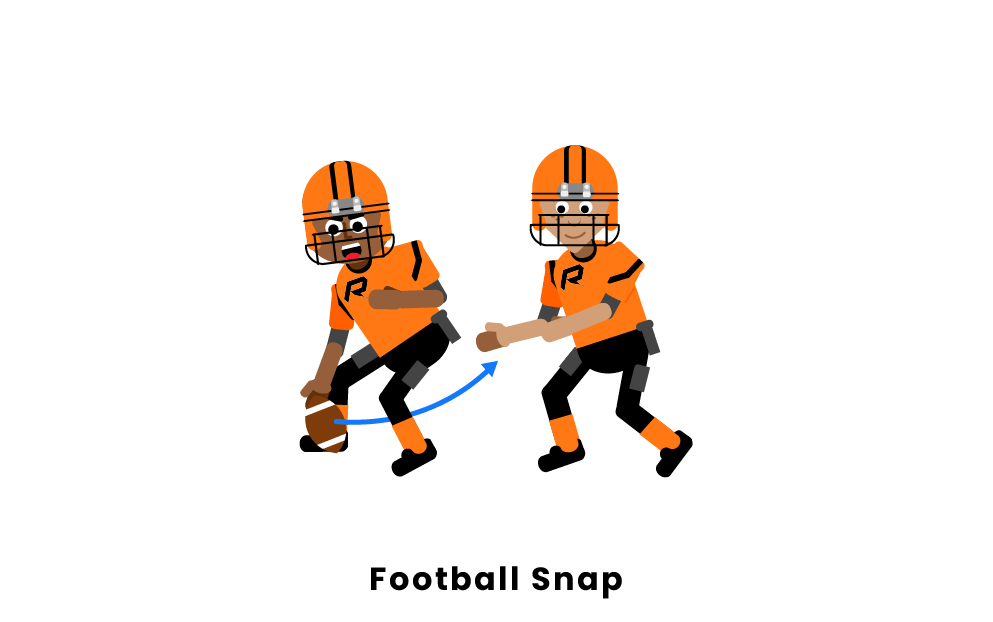
Long snapping became a specialized position in football in the 1960s and 1970s. Before this time, snapping was usually performed by a center or linebacker who played other positions as well.
As punting and kicking became a more important part of the game, teams realized having a dedicated player who specialized in long snapping improved protection, accuracy, and speed on kicks and punts. This allowed the punter or kicker more time to focus on technique and mechanics without having to handle snapping duties.
One of the first specialized long snappers was Mike Kadish, who played 12 seasons with the Buffalo Bills from 1970-1981. The importance of long snapping grew throughout the 70s and 80s as more teams dedicated a roster spot solely for a long snapper.
By the 1990s long snappers were the norm at both the college and professional level. Today every NFL and college team has a player whose primary or only responsibility is long snapping on punts, field goals, and extra points. While they don’t get the same recognition as quarterbacks or running backs, long snappers play an invaluable role executing successful kicks and punts.
Role on the Field
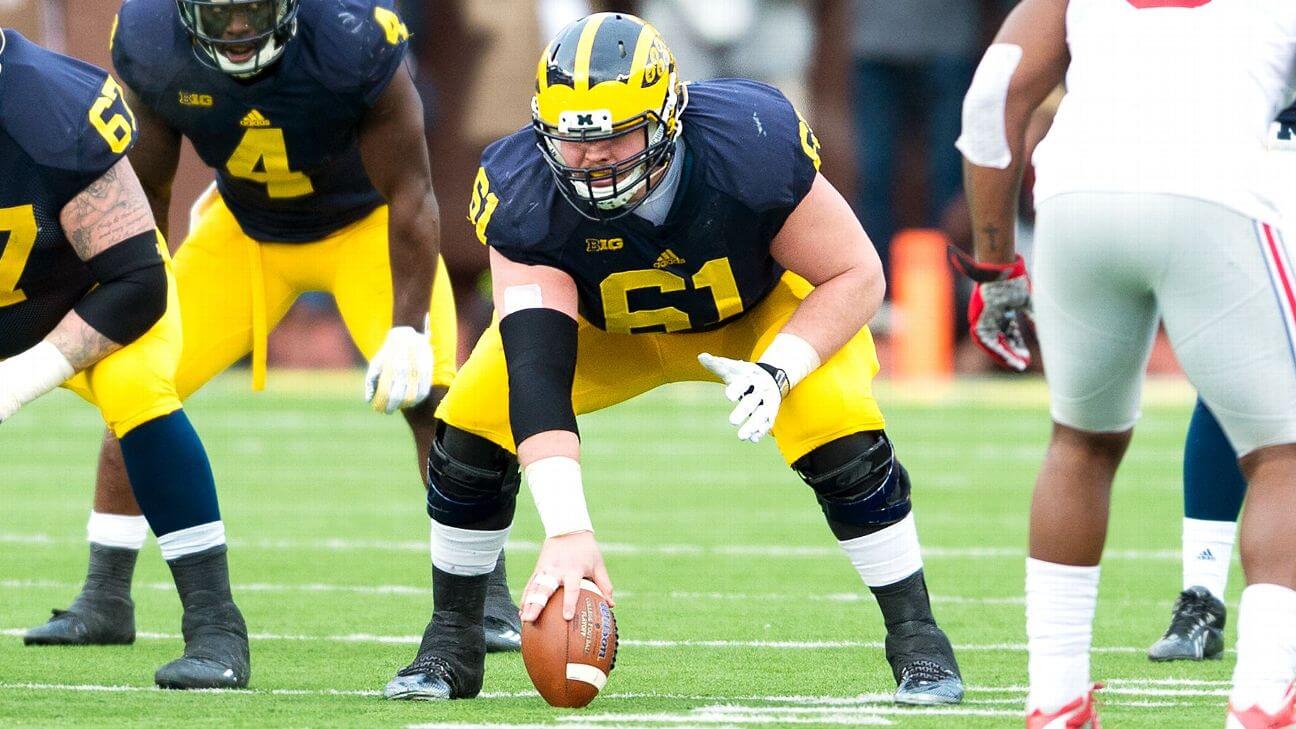
The long snapper has one primary role on the football field – to snap the ball a long distance (typically 15 yards) back to the holder or punter with speed and accuracy.
They specialize in performing two types of snaps during a game:
- Punt Snaps – When the offense is punting the ball, the long snapper hikes the ball between his legs back to the punter, who catches it and kicks it downfield. The snap needs to be fast and on target to enable the punter to get off a good kick.
- Field Goal/Extra Point Snaps – On field goal and extra point attempts, the long snapper delivers the ball between his legs to the holder, who positions it for the placekicker to kick. The margin for error is small, as inaccurate snaps can ruin a scoring opportunity.
Precision and consistency are critical – the long snapper often remains in the game for 100+ snaps without substitution. A single bad snap can be costly, so long snappers practice extensively to perfect their technique. While snapping is their specialty, long snappers will also make the occasional tackle on punt or kick coverage.
Skills and Technique
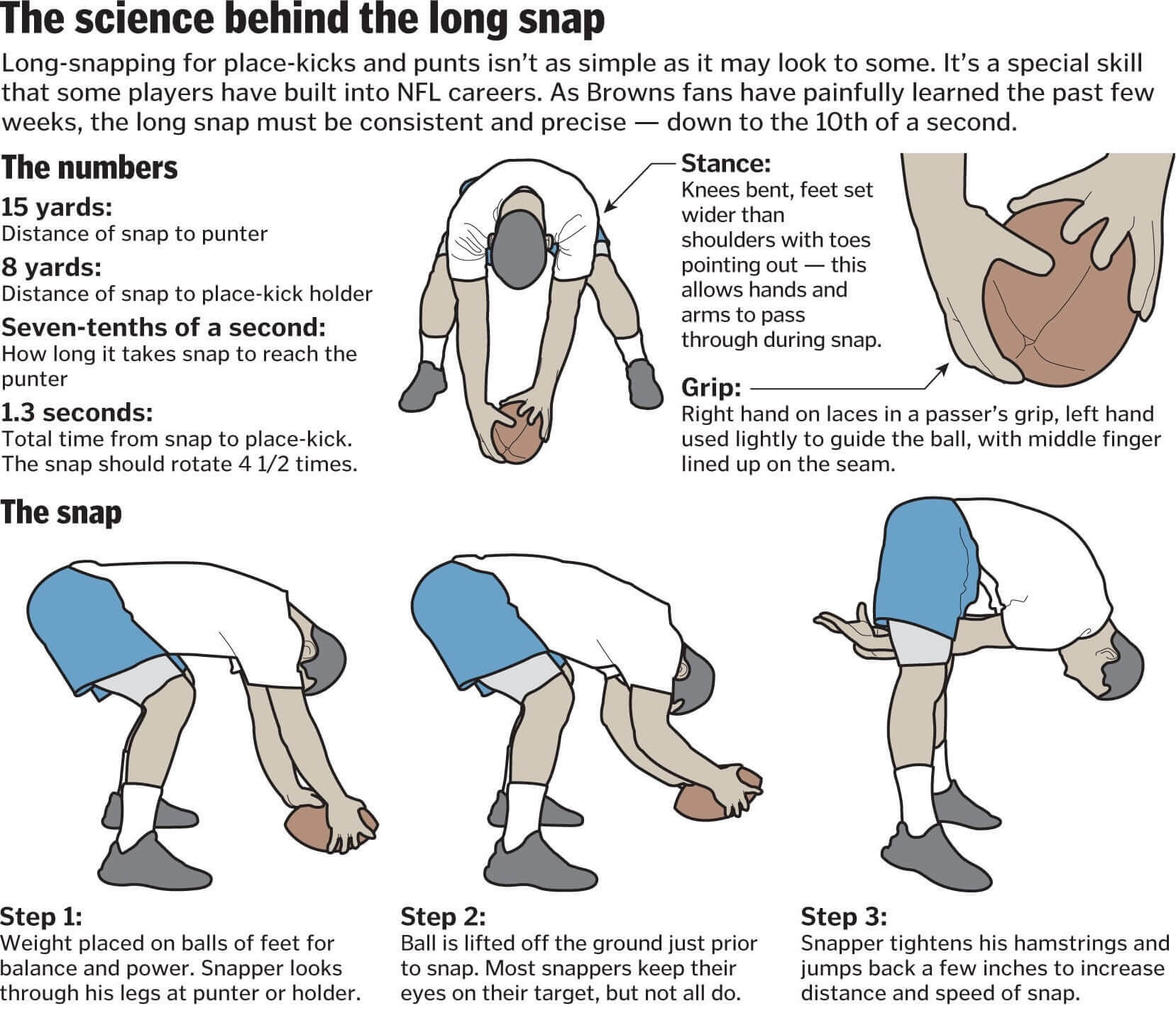
A long snapper must have a very specialized and difficult skillset to perform their role successfully. Accuracy, speed, blocking ability, and handling bad snaps are all critical.
Accuracy is arguably the most important skill for a long snapper. They must snap the ball back to the punter or holder with pinpoint precision, often between their legs and while looking backwards. The margin for error is extremely slim, as a slightly off-target snap can ruin the timing of a kick or field goal attempt. Long snappers spend hours upon hours perfecting consistent, accurate snapping technique.
Speed is also vital. The snap must reach the punter or holder quickly, so there is enough time to get the kick off. Elite long snappers can snap the ball at velocities exceeding 40 miles per hour. A slow snap risks a blocked punt or a botched placement. Speed and accuracy must be combined for maximum effectiveness.
Though not directly involved in snapping, blocking skills help a long snapper. They will often need to briefly block or disrupt any oncoming defenders right after the snap, protecting the punter or holder. Strong blocking gives them extra time to perform their kicks.
Finally, handling bad snaps is an underrated but critical skill. Even the best long snappers will occasionally make errant snaps. They must be poised and alert enough to quickly grab any wayward snaps and try to salvage the play. This rapid reaction time minimizes potentially disastrous turnovers.
Special Teams
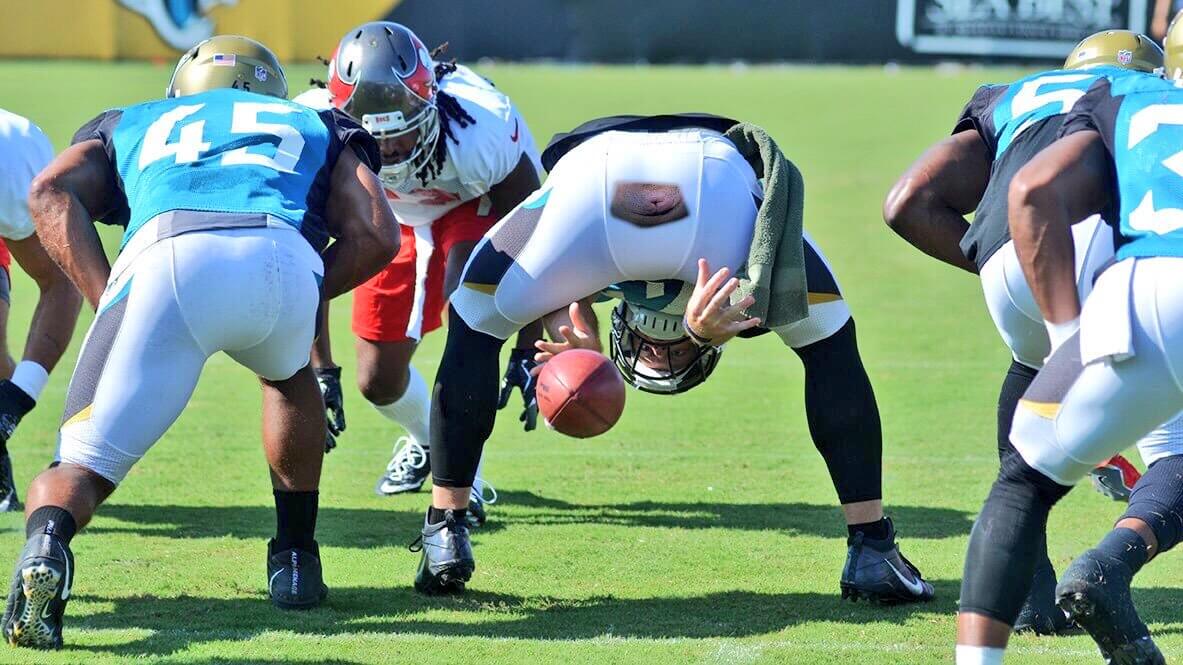
A long snapper’s primary role in football comes on special teams during field goals, punts, and extra point attempts. On field goals and extra points, the long snapper snaps the ball 7-8 yards back between his legs to the holder, who positions the ball for the kicker. The long snapper must deliver the ball quickly and accurately to facilitate the timing of these kicking plays. A good long snap gives the holder time to position the ball while the approaching rush defenders remain blocked.
On punts, the long snapper hikes the ball 12-15 yards back to the punter. Again, this must be a crisp, on-target snap to aid the punter’s effort. The longer distance on punt snaps gives punt rush defenders more time to reach the punter, so a clean snap is critical. A mishandled snap can ruin a punt and give the opponent excellent field position.
The long snapper plays a key role in each special teams play, directly impacting the success or failure of kicks and punts. Their specialized skill delivering accurate, speedy snaps under intense pressure is a crucial component of a football team’s special teams. A reliable long snapper provides a competitive edge for field goals, punting, and extra points.
Finding a Long Snapper
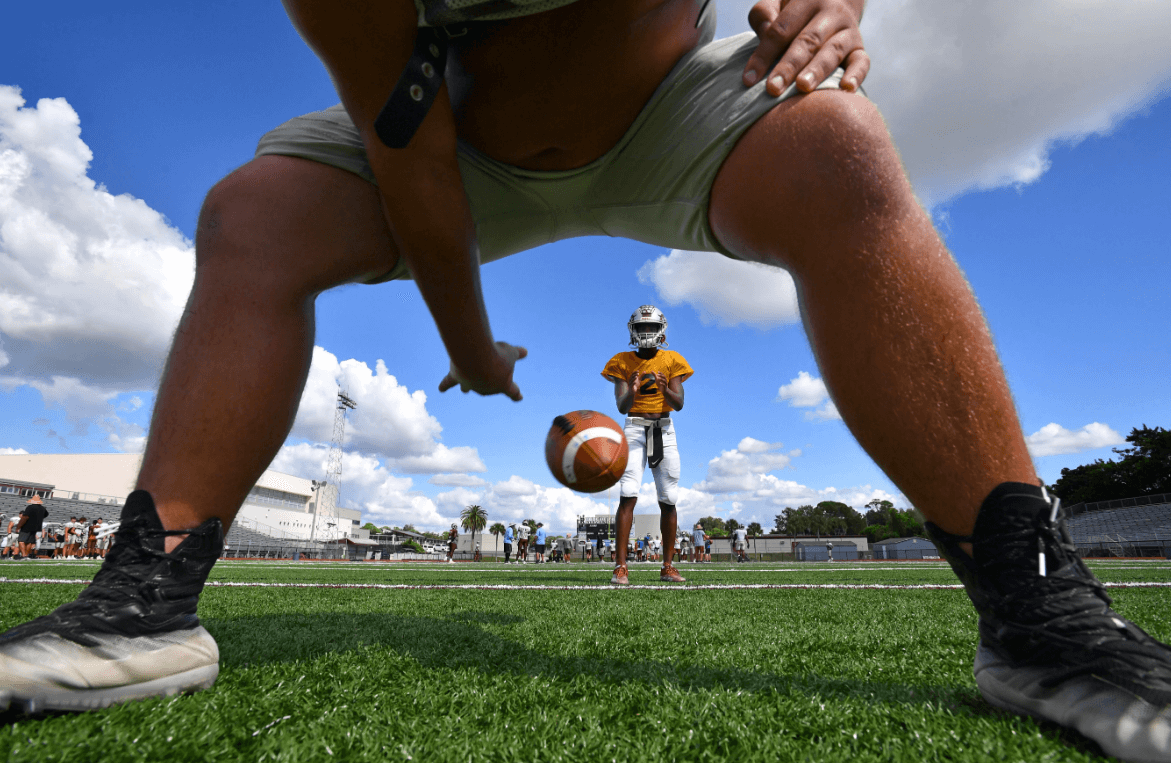
As one of the most specialized positions in football, long snappers are notoriously difficult to recruit. There are no college scholarships dedicated solely to long snapping since most long snappers at the college level play another position as well. This means that college coaches often have to scout out prospects who displayed aptitude for long snapping in high school but did not receive a scholarship offer.
The typical path for a long snapper is to learn the skill in high school while playing another position like tight end or linebacker. They may get opportunities to long snap during games or special teams practice. A college coach might notice their potential and invite them to join the team as a walk-on to focus on long snapping. This allows the player to develop their skills with college coaching while potentially earning a scholarship later on.
Since there are no elite camps or extensive scouting for long snappers, coaches have to take special effort to find talent. They may ask high school coaches for recommendations or keep an eye out for players at regional camps and combines. Generally only the top Division I colleges actively recruit long snappers. Smaller colleges rely on walk-ons. But often a skilled long snapper can earn a roster spot if they showcase elite accuracy and velocity.
The lack of scholarships available makes long snapping a very competitive position to break into at the college level. Prospects have to market themselves and be persistent in contacting coaches. If they can develop into a reliable long snapper it may lead to getting recruited by NFL teams. But the limited opportunities mean long snapping is an uphill path.
Notable Long Snappers
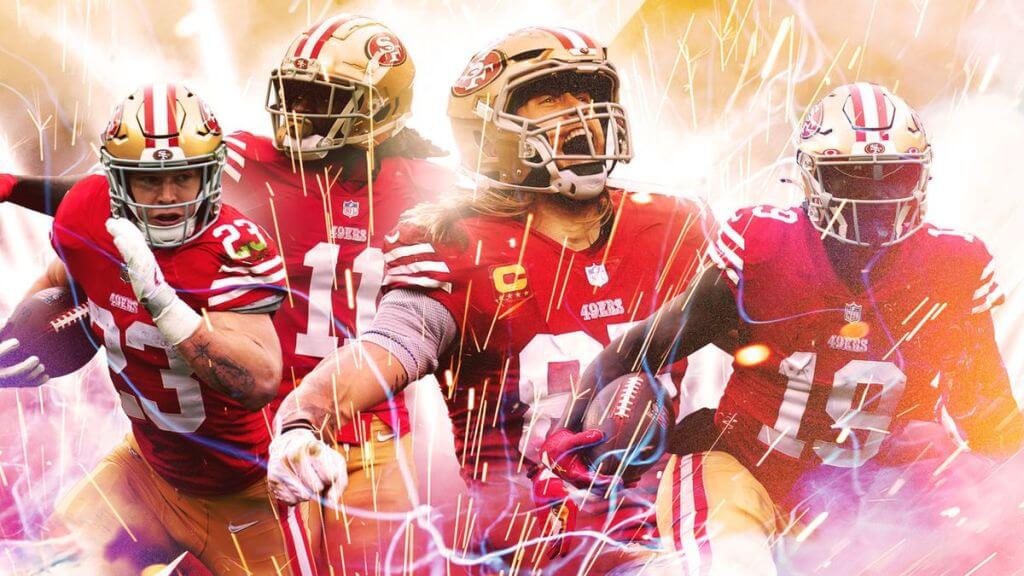
Long snapping in the NFL has evolved into a specialized position that requires precise skills and technique.
Here are some of the most accomplished long snappers in NFL history:
John Denney
John Denney played for the Miami Dolphins from 2005 to 2018, appearing in 224 games, the most by a long snapper in NFL history. Denney was known for his accuracy and consistency, handling both long snaps and shorter snaps for field goals and extra points without a single bad snap in 14 years. He earned 2 Pro Bowl selections and was a team captain.
Jake McQuaide
Jake McQuaide has been the long snapper for the Los Angeles Rams since 2011. He earned Pro Bowl selections in 2016 and 2017 and was a key special teams player in the Rams’ Super Bowl run in 2018. McQuaide is regarded as having excellent technique and velocity on his snaps.
Jon Dorenbos
Jon Dorenbos played for the Buffalo Bills and Philadelphia Eagles from 2003 to 2016, making the Pro Bowl in 2014. He set the record for most consecutive games by an Eagles player with 162 over 11 seasons. Dorenbos was traded to the Saints in 2017 but was unable to play due to a heart condition that required surgery.
J.J. Jansen
J.J. Jansen has been the Carolina Panthers long snapper since 2009. He has handled long snaps for kicker Graham Gano, who holds several franchise scoring records. Jansen has posted the fastest snap times at the NFL Combine since the metric was first recorded in 2008.
Morgan Cox
Morgan Cox was the Baltimore Ravens long snapper from 2010 to 2020, playing in 136 consecutive games. He earned Pro Bowl selections in 2015 and 2019 and won Super Bowl XLVII with the Ravens. Cox was known for his consistency and durability over his long career.
Salary and Contracts

Long snappers are among the lowest paid players in the NFL, but they can still have lengthy and lucrative careers compared to other positions. The average salary for a long snapper is around $1 million per year. However, salaries range from the league minimum around $500,000 for less established players to $2-3 million per year for the top long snappers.
Despite their specialized role, long snappers are not exempt from the NFL salary cap. This means they must fit within the team’s total budget like other players. As a result, their salaries remain modest compared to higher profile positions.
The earning potential for long snappers comes from their career longevity. While most NFL players average 3-4 years in the league, long snappers often play 10+ seasons. There are several examples of long snappers playing 15+ years. This allows them to collect consistent NFL paychecks and benefits for over a decade – a rarity in the league.
Long snappers also benefit from increased job security. As essential specialists, they rarely face competition for their roster spot. Barring major performance issues, long snappers can expect to remain with the same team year after year. This provides a level of stability not seen in other NFL positions.
Overall, long snappers earn a relatively modest but steady income compared to other football players. Their specialized skill set allows them to carve out lengthy careers and get paid handsomely to play a role that goes unnoticed – until it’s botched. While not the highest paid, long snappers enjoy rare stability and longevity in the NFL.
Injuries and Replacement

While long snappers are specialized players, they also take part in practicing other positions to be ready in case of emergency. If a long snapper were to suffer an injury during a game, the team has contingency plans in place.
Typically the backup long snapper is either another specialist like a tight end or linebacker who has practiced long snapping. In some cases, coaches may turn to experienced players who long snapped in high school or college. Teams usually have a few players on the roster capable of filling in if absolutely necessary.
The most important factor is having a player who can reliably execute a shotgun snap for punts and field goals. A team may simplify their protection schemes but they can’t remove the need for a good snap. Missed or errant snaps can result in disastrous blocked kicks.
Losing a starting long snapper mid-game is a big challenge. While other players can fill the role adequately, there is a significant drop off in consistency and precision. The continuity between snapper, holder, and kicker is disrupted and this can lead to costly mistakes.
Teams mitigate this risk by only keeping long snappers who rarely suffer injuries that would knock them out mid-game. Still, the loss of a starter would force coaches to scramble and draw up an emergency plan. The replacement long snapper may need coaching on the sidelines to be ready. It’s a situation all teams hope to avoid.
Conclusion
The long snapper is one of the most specialized and overlooked positions in football. Yet this role is absolutely crucial to the success of punts, field goals, and extra points. Without a skilled long snapper, it would be nearly impossible for the punter or placekicker to perform their roles effectively.
The long snapper must execute fast, accurate, and consistent snaps over long distances, all while defenders bear down attempting to block the kick. It requires immense practice and coordination to snap the ball 15+ yards back between the legs with velocity and precision. Mastering this technique is no easy feat.
In addition to specialized snapping skills, long snappers must also be athletic enough to sprint downfield to make the tackle on punts. They need strength and tackling skills as crucial members of kick coverage.



